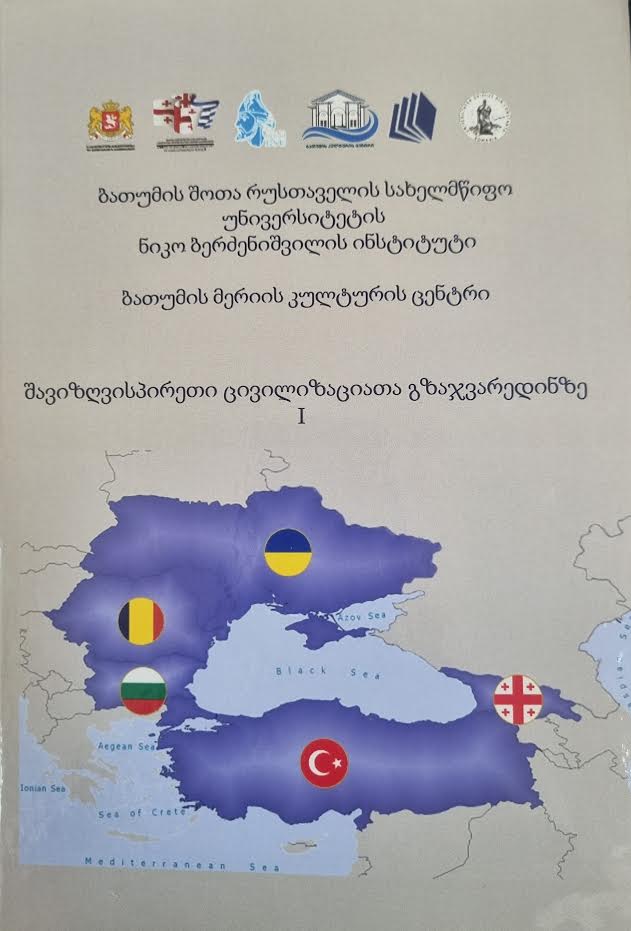Modification of Traditional Housing on the Example of Meskhuri Oda
DOI:
https://doi.org/10.61671/bsrcc.v2i.7859Keywords:
Samtskhe-Javakheti, Dugouts, Hearth, Fireplace Modification, Modern Household appliancesAbstract
The traditional dwelling of Samtskhe-Javakheti, the darbazi house with a "swallow dome roof, was prevalent in eastern Georgia and adjacent regions. These dwellings, typically concentrated in densely populated settlements, constituted a complex comprising both residential and agricultural structures under a unified roof. Regional variations of the darbazi house have emerged due to ecological, geographical, and socio-economic differences across Georgia. The scholarly discourse delineates three primary local variants: Kartlian, Tsalka/Trialetian, and Meskhetian (in Samtskhe-Javakheti).
In southern Georgia (Samtskhe-Javakheti), as well as in Trialeti and other locales, the segmentation of darbazi houses by adding new sections marks the initial phase in transitioning from the swallow dome-type to modern housing. This transition necessitated structural alterations, particularly by replacing the hearth – which held paramount and sacral significance in traditional housing – with stoves and fireplaces. These structural modifications also influenced the interior of the room. In some cases, complex outbuildings appeared (fireplace-bakery-stove). Due to the construction of a special chimney, the zenith window (erdo) lost its smoke ventilation role. The threat of enemy invasion and the defensive purpose of dugouts are a thing of the past. Dramatic changes, which, among other things, manifested themselves in the dissolution of the traditional social unit, the family community, led to a disruption of the social function of darbazi-type buildings.
The transition to above-ground housing witnessed significant shifts, including the introduction of stone walls, windows for interior illumination, and the gradual replacement of domes and zenith windows with chimney roofs. This evolution led to the separation of agricultural structures from residential areas, with walls assuming a supportive role for the roof.
Despite these transformations, dugout dwellings persisted in Samtske-Javakheti, even during the Soviet era, caused by certain factors such as ecology, climate, and agricultural conditions. Similar buildings are still preserved in Javakheti, although they are mainly utilized for economic and tourism (museum, exotic) purposes today; these structures present a fusion of old and new lifestyles. For example, electricity is used for lighting, the rooms have modern attributes: internet, plasma TV, refrigerator, etc.
References
დავითაშვილი, 1986: – დავითაშვილი გ., ქართული ხალხური საცხოვრებლის ინტერიერი, საქართველოს ისტორიულ ეთნოგრაფიული ატლასი მასალები ( საქართველოს მთური საცხოვრებელი ნაგებობები), თბ. 1986.
რობაქიძე, 1986: – რობაქიძე ა., ქართველი ხალხის ტრადიციულ საცხოვრებელ ნაგებობათა კლასიფიკაციის პრინციპი (საქართველოს მთური საცხოვრებელი ნაგებობანი), საქართველოს ისტორიულ ეთნოგრაფიული ატლასი მასალები, თბ., 1986.
ჩიტაია, 1953: – ჩიტაია, „მასალები საქართველოს ეთნოგრაფიისათვის“, VI, თბილისი, 1953.
ჩიტაია, 1926: – ჩიტაია, „გლეხის სახლი ქვაბლიანში“, მიმომხილველი / საქართველოს საისტორიო და საეთნოგრაფიო საზოგადოების ორგანო. ტფილისი, №1, 1926.
ჩიტაია, 1947: – ჩიტაია, ანალები, I, ისტორიის ინსტიტუტი. თბილისი, 1947.
ჩიქოვანი, 1960: – ჩიქოვანი თ., ქართული ხალხური საცხოვრებელი (წალკური სახლი), თბ., 1960 ჩიქოვანი, 1962: – ჩიქოვანი თ., „მესხურ-ჯავახური დარბაზული სახლი“. საქ. სსრ მეცნ. აკადემიის საზოგადოებრივი განყოფილების მოამბე, თბ., 1962.
ჩიქოვანი, 1967: – ჩიქოვანი თ., ა/კ ხალხურ საცხოვრებელ ნაგებობათა ისტორიიდან, თბ., 1967.
ჩიქოვანი, 1979: – ჩიქოვანი თ., „მესხეთი“, თბ., 1979.
ჩიქოვანი, 1982: – ჩიქოვანი თ., „ჯავახეთი“, თბ., 1982.
ჯავახიშვილი, 1976: – ჯავახიშვილი ივ., „აღმშენებლობა და ავეჯი, მასალები საქართველოს შინამრეწველობისა და წვრილი ხელოსნობის ისტორიისათვის“, აკად. ი ჯავახიშვილის საერთო რედაქციით 5 ტომად, I, რედ. ვ. ჯაფარიძე, გამომცემლობა „მეცნიერება“ თბ. 1976.
Лисициан, 1927: – Лисициан С., Из материалов по изучению жилищъ Армении. //Известия КИАИ. Ереван, 1927, т. 4.
Лисициан, 1927: – Лисициан С., К изучению Арменского крестьянского жилища (Карабахский карадам). //Известия КИАИ. Ереван, 1925, т. 3.
Марутян, 1989: Марутян А.Т., Интерьиер армяанского народного жилища (вторая половина XIX- начало XX в.) // Армянская этнография и фольклор, Ереван, № 17, 1989.
Робакидзе, 1975: – Робакидзе А.И., Традиционные формы поселений в Аджарии, ОЭА, Тб., 1982; Робакидзе А.И., Предисловие «Кавказский этнографический сборник», т. 5, Тб., 1975.
Сумбадзе, 1984 – Сумбадзе Л. Э., Архитектура грузинской народного жилиша: «дарбази», Тб., 1984.














